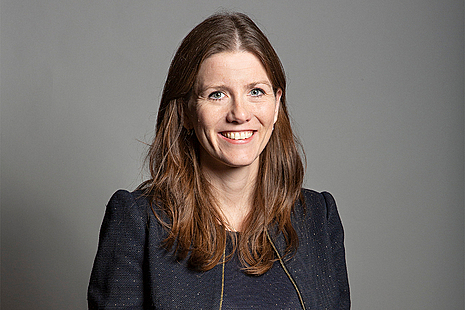Making Government work for everyone: the accessibility imperative

Image Credit: HM Treasury
With an estimated 17% of the Civil Service identifying as having accessibility issues associated with disability and neurodiversity - ensuring that an increasingly digital workplace reduces accessibility barriers, and doesn’t throw up new ones, is a key priority.
HM Treasury underlined its commitment to addressing digital inclusion by putting a seminar on accessibility at the centre of its agenda during last week’s Innovation Day 24 series of events.
Prominent government accessibility champions outlined the rising importance of disability inclusion, the transformative role of technology, and the cultural shifts needed to foster a truly inclusive civil service.
Disability inclusion on the rise
Hector Minto - UK Government Disability & Access Ambassador with Cabinet Office & Director of Accessibility and Lead Technology Evangelist, Microsoft, has been advocating for accessibility since 1997: “A quarter of the global population lives with disabilities when you include neurodiversity and the mental health epidemic since COVID-19,” he said, highlighting the growing relevance of inclusion.
He explained how accessibility has shifted from a niche concern to a mainstream priority. “iPads and voice control have normalised accessible technology. People rely on these tools to be included,” he stated. “Accessibility is the deliverable; disability is the people.”
Minto outlined a three-horizon strategy for embedding accessibility in the workplace:
- Empower colleagues by using built-in accessibility features such as captions and dictation to boost productivity.
- Upskill teams to understand and apply these tools effectively.
- Drive innovation, as disability inclusion often leads to breakthroughs, like voice input, app magnification, and more.
Culture and leadership in accessibility
Tia Shafee, People Strategy Lead at HM Treasury, stressed the importance of fostering open conversations about disability within teams. “You have to know what you don’t know,” they said. “Hearing the voices of disabled colleagues and raising issues when needed is essential to creating inclusive environments.”
Shafee underscored the role of team culture in driving accessibility. “We all build our cultures. Leaders are influential, but habits formed within teams can push leaders to follow.” They also highlighted the Treasury’s measurable diversity targets, which focus on creating an inclusive, day-to-day experience for all civil servants.
Nicki Berry, Head of Accessibility at the Department for Work and Pensions (DWP), echoed this sentiment. “When leaders start talking about accessibility, behaviours change,” she said.
Ben Good - Chair of Civil Service Visual Network, Chair of HMRC Sight Impaired Group for Help & Technology, Member of Civil Service Disability Network Executive, HM Revenue and Customs, added: “Directors and DGs can lead by example by refusing to accept content that isn’t accessible. My brand is accessibility - don’t send me something to share if it isn’t accessible.”
Accessibility helps drive innovation
The seminar highlighted how user feedback from disabled individuals has driven many technological innovations, from the invention of the typewriter to blurred backgrounds in video calls. “You’ve got to ask yourself who’s not here and why they’re not using your product,” said Minto.
The Disability Confident Scheme, currently being relaunched, was also discussed as a unique initiative that could incorporate digital accessibility as a core component. “It’s the only scheme in the world with 20,000 companies signed up, but digital accessibility needs to be intrinsic,” Minto emphasised.
Shafee noted the need to address accessibility for both citizens and colleagues, citing the Public Sector Equality Duty as a key driver of change.
AI & accessibility
The panel explored the potential of AI in transforming accessibility. Good shared how Microsoft Co-Pilot produced an accessible PowerPoint presentation with proper contrast levels and descriptive text, enabling visually impaired users to follow along. “AI can describe pictorial elements and generate transcripts, which are key for inclusion,” he said.
Minto added that AI will be “very supportive of neurodiverse experiences,” while Shafee, who is autistic, highlighted how subtitles enhance their productivity. However, they cautioned that assistive tools alone are not enough and stressed the importance of multimodal experiences that consider all needs.
Berry pointed out that while physical disabilities often share overlapping solutions, neurodiversity requires more tailored approaches. “One person’s needs won’t necessarily work for someone else,” she said. She also emphasised the importance of balancing technological tools with human input: “The human element shouldn’t be taken away.”
Accessibility as a workplace standard
Shafee advised teams to adopt a forward-thinking approach. “Don’t assume that people won’t use accessible documents. You never know who will join your team in the future and need them.” Their advice to teams was simple yet profound: “Just be chill - take the emotion out of accessibility requests.”
The seminar’s overarching message was clear: accessibility isn’t just about compliance; it’s about creating a workplace where everyone can contribute fully. By embedding accessibility into workplace culture, leveraging technology, and listening to the lived experiences of disabled colleagues, the Civil Service can lead the way in fostering a more inclusive society.
Acknowledgements: We would like to thank the HM Treasury team for inviting Government Transformation Magazine along to be a part of their Innovation Day 24.






